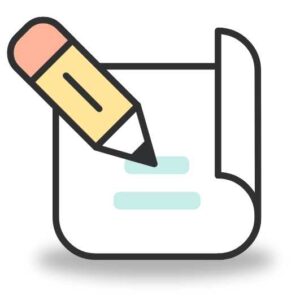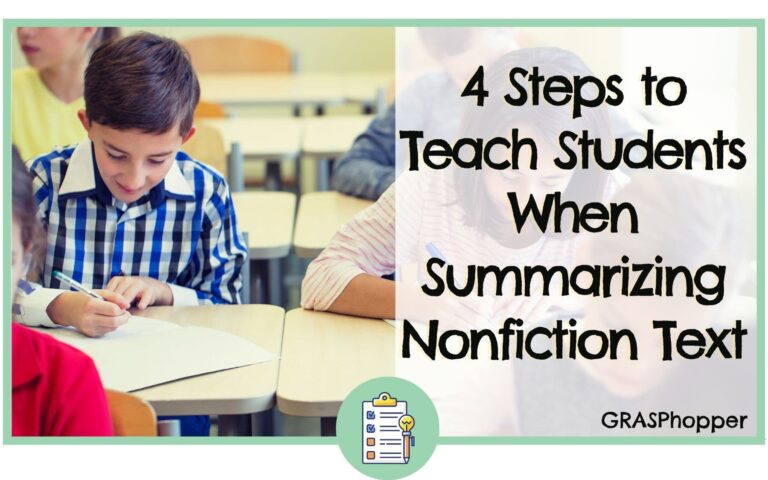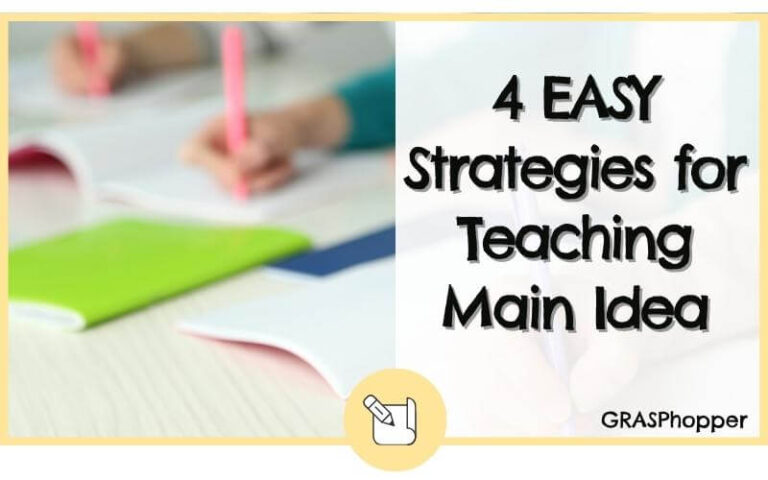Do you know what knocking over a tower of dominoes can teach us about reading and writing?
Two words: cause and effect
Understanding cause and effect text structure is an essential skill for upper elementary students to know. As educators, we play an important role in helping our students grasp this concept to enhance their reading and writing abilities.
In this post, we’ll dive into what cause and effect text structure means, why it’s important for students and practical strategies for teaching it effectively!

What Does Cause and Effect Text Structure Mean?
Cause and effect text structure is one of the most common non-fiction text structures.
It’s a way of organizing information where the writer first talks about an event or action (the cause) and then describes what happens next because of that event or action (the effect). It’s like connecting the dots to show readers how one thing leads to another.
For instance, if a character in a story eats too much candy (the cause), they might end up with a stomach ache (the effect).
Understanding cause and effect text structure is crucial for students as it helps them make sense of how events are connected in a story or article.
Ready to explore some cause an effect passage examples?
GRAB THE CAUSE AND EFFECT TEXT STRUCTURE RESOURCE!
What is the Purpose of Cause and Effect Text Structure?
The purpose of cause and effect text structure is to help students understand the relationship between events and how they influence each other.
By recognizing this type of text structure, students can comprehend the sequence of events in a story or informational text much more effectively. This understanding also helps strengthen their ability to make predictions while reading.
Besides that, understanding cause and effect is a really important part of a child’s development. Kids need to realize that actions have consequences.
This skill can be difficult for kids to grasp because understanding cause and effect means understanding why something happened and some students really struggle with that abstract term “why.”
Children can more easily learn and understand cause and effect from real-life experiences.
So, let’s look at some hands-on ideas below for helping your students to understand cause and effect text structure in a more visual and concrete way.
Hands-On Ways to Help Kids Understand Cause and Effect
To effectively teach students about cause and effect, it can be helpful to engage them in hands-on classroom activities, before moving on to identifying this structure within texts. Here’s a list from super simple to a bit more complex, that can be done within a single period:
- Quick and easy: Turn the light switch off and on, blow up and then pop a balloon, or roll a toy car down an object on an incline. Have students label the actions with cause and effect as you go.
- Dominoes: Set up a line of dominoes and show them how knocking down the first one causes a chain reaction, with each domino falling being the effect of the previous one falling.
- Tug of War: Use a lightweight rope or strong resistance band. Discuss how pulling on one end of the rope (cause) leads to movement or tension on the other end (effect), depending on which team is stronger.
- Experiment: Mix baking soda and vinegar to demonstrate a chemical reaction that causes fizzing. Discuss how mixing the two substances (cause) leads to the fizzing reaction (effect).
- Interactive Storytelling: Give students a simple story with cause-and-effect relationships missing. Have them work in pairs to add the missing causes or effects to the story, making it more complete and logical.
What is an Example of a Cause and Effect Text?
Now that we’ve explored hands-on activities to grasp cause and effect, let’s delve into some simple written examples that 3rd, 4th, and 5th graders might encounter in their reading.
We suggest first moving into cause and effect sentences, before building up into complete texts. Breaking down these examples helps students identify the cause-effect relationship and understand the order of events more closely.
➞ The plants wilted because they weren’t watered regularly.”
Here, the cause is the irregular watering of the plants, and the effect is the wilting of the plants.
➞ Max studied 3 days in a row and finally aced his test!
Here the cause is studying for his test and the effect of studying is getting an A on it.
➞ The strong wind knocked over the flower pots, causing them to break.
Here the cause is that the wind was strong and the effect is that the flower pots broke because of it.
As a final sentence activity, have students write their own cause and effect sentences. Have them swap them with their peers, and see if they can identify the connection!
As students become comfortable identifying cause and effect relationships in simple examples and sentences, they can begin applying this skill to longer passages and texts.
Using passages allows students to see how cause and effect relationships are woven throughout a story or article, helping them develop a deeper understanding of how events are connected and how authors convey these relationships. By practicing with passages, students can strengthen their comprehension skills and become more adept at analyzing complex texts.
Signal Words to Look for in a Cause-Effect Text Structure
Now that we’ve practiced identifying cause and effect relationships through hands-on activities and written examples, let’s take a slight detour to learn about cause and effect signal words. Identifying these signal words can further guide students in recognizing these relationships in informational texts.
It really helps if we can give students a few signal words to look for when identifying a cause and effect relationship in an informational text. These words act as clues that help readers recognize when an author is discussing a cause and effect situation.
Some common signal words for a cause and effect text might be:
- because
- so
- therefore
- since
- if…then
- according to
- due to
- in order to
- as a result of
- consequently
By paying attention closely to the key words, students can pinpoint these relationships more easily within a reading passage.
Let’s look at the following sequence of activities as an example:
The heavy rain caused flooding in the streets. Because the drainage system was clogged with debris, water couldn’t flow away properly. As a result of this, many neighborhoods experienced water damage to homes and properties. Consequently, residents had to evacuate to safer areas until the floodwaters receded.
In this example paragraph, words like “caused,” “because,” “as a result of,” and “consequently” show how things are connected. They help students see the order of what happened in time order and why.
If students need further support in understanding cause and effect text structure, show this free learning video. It goes into detail on what cause and effect is along with examples. This video pairs well with our Cause and Effect Text Structure Resource!
Different Types of Text Structures
Besides understanding cause and effect, kids should also know about other ways that texts are organized.
In nonfiction texts, there are different types of structures to read like describing things, putting events in order, solving problems and comparing things.
Each type helps organize information differently. It’s beneficial for students to read and study all of the different text structures. This helps them extract key information and summarize the information they learn in the text.
Check Out Other Activities for Different Text Structures:
Here are some other common nonfiction text structures that would be beneficial for students to practice with, especially for standardized test prep. Many tests will have students read various nonfiction texts and answer critical thinking questions about them.
















